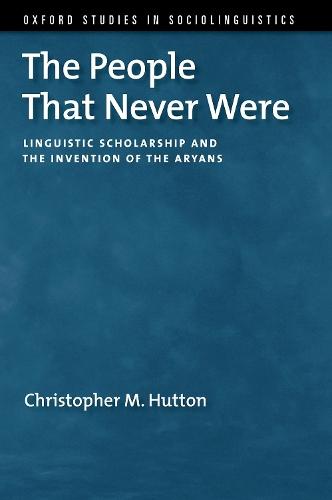Overview
Though most recognize the term Aryan, few understand its extensive and complex history. Scholars continue to debate the location of the original Aryan homeland, but unlike with the civilizations of ancient Egypt, Greece, or Rome, there is no direct textual or archeological evidence of an ancient Aryan civilization. As Christopher M. Hutton argues in this book, Aryan, in essence, is a fictional category--the Frankenstein's monster of the western intellectual tradition.In The People That Never Were, Hutton takes a fresh look at the concept and asserts that much of the received wisdom is misleading or false. He begins by challenging the belief in the existence of an ancient Aryan race or people, making the case that the concept was brought into being by western philology and Indology. Hutton then takes the reader through the history of the Aryan concept, beginning with colonial scholarship in India around 1800, and ending in the first decades of the twentieth century. With a particular focus on the role of philologists' distorted readings of ancient Sanskrit texts, Hutton shows how Aryan came into English around 1840, promoted primarily by F. Max Müller, whose own conceptual confusions subsequently were projected back onto ancient India and at the same time read into contemporary Europe. As a result, Aryan emerged as a free-standing explanatory device and a key to historical narratives of superiority and inferiority, leading to bitter controversies and profound misunderstandings that continue to this day.A critical intellectual resource on the Aryan paradigm, The People That Never Were interrogates the conceptual errors that provide the basis for historical linguistics, raising a challenging set of questions for the discipline. This is an open access title available under the terms of a CC BY-NC-ND 4.0 International license. It is free to read on the Oxford Academic platform and offered as a free PDF download from OUP and selected open access locations.
Full Product Details
Author: Christopher M. Hutton (Chair Professor in the School of English, Chair Professor in the School of English, University of Hong Kong)
Publisher: Oxford University Press Inc
Imprint: Oxford University Press Inc
Dimensions:
Width: 16.60cm
, Height: 2.70cm
, Length: 24.30cm
Weight: 0.526kg
ISBN: 9780190212988
ISBN 10: 0190212985
Pages: 298
Publication Date: 30 October 2025
Audience:
College/higher education
,
Postgraduate, Research & Scholarly
Format: Hardback
Publisher's Status: Active
Availability: To order

Stock availability from the supplier is unknown. We will order it for you and ship this item to you once it is received by us.
Author Information
Christopher M. Hutton is Chair Professor in the School of English at the University of Hong Kong. His research concerns the history of linguistics, in particular the relationship between linguistics and race theory, as well as language and law. He is the author of several books, including The Tyranny of Ordinary Meaning; The Legal Personhood of Animals; and Race and the Third Reich.



